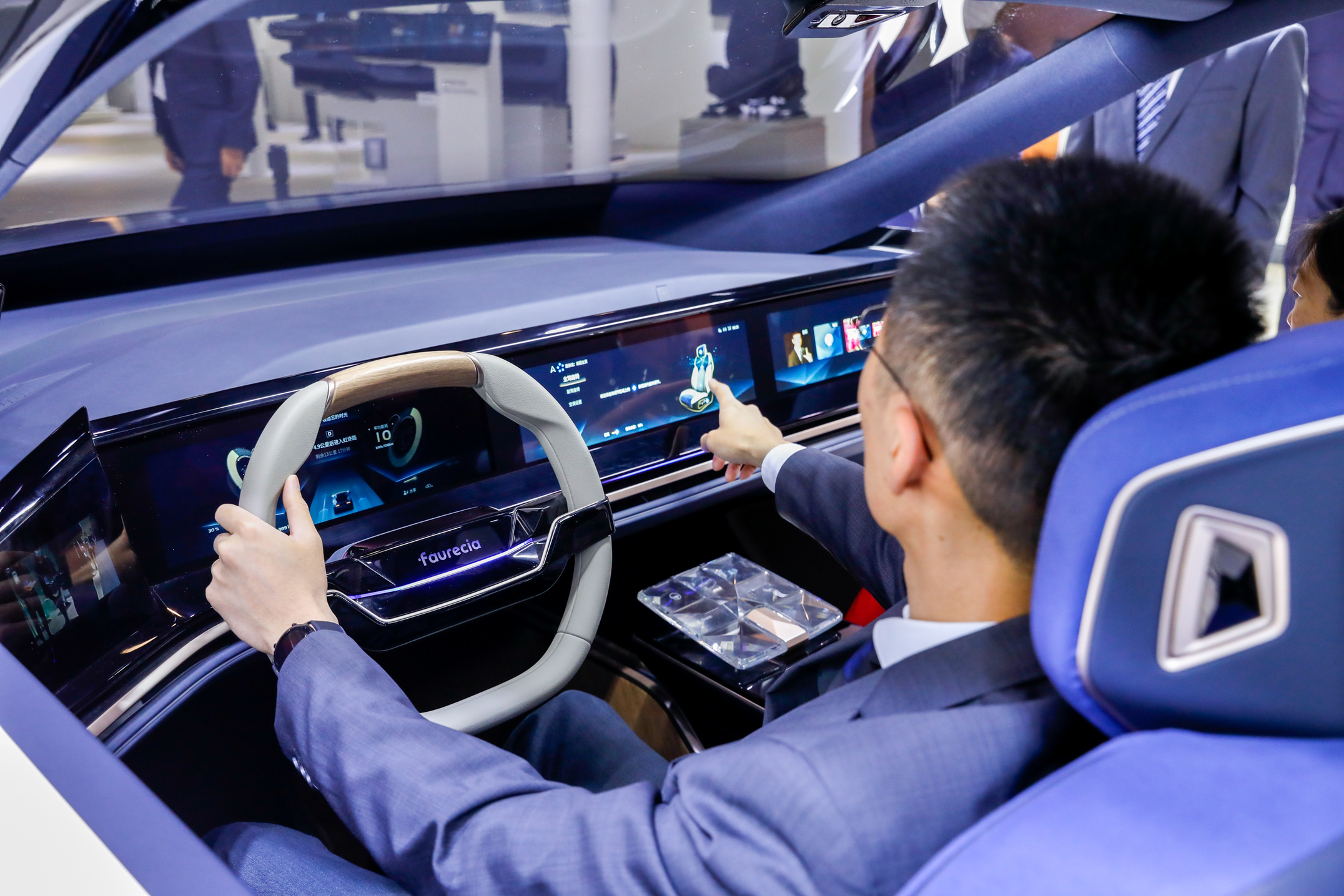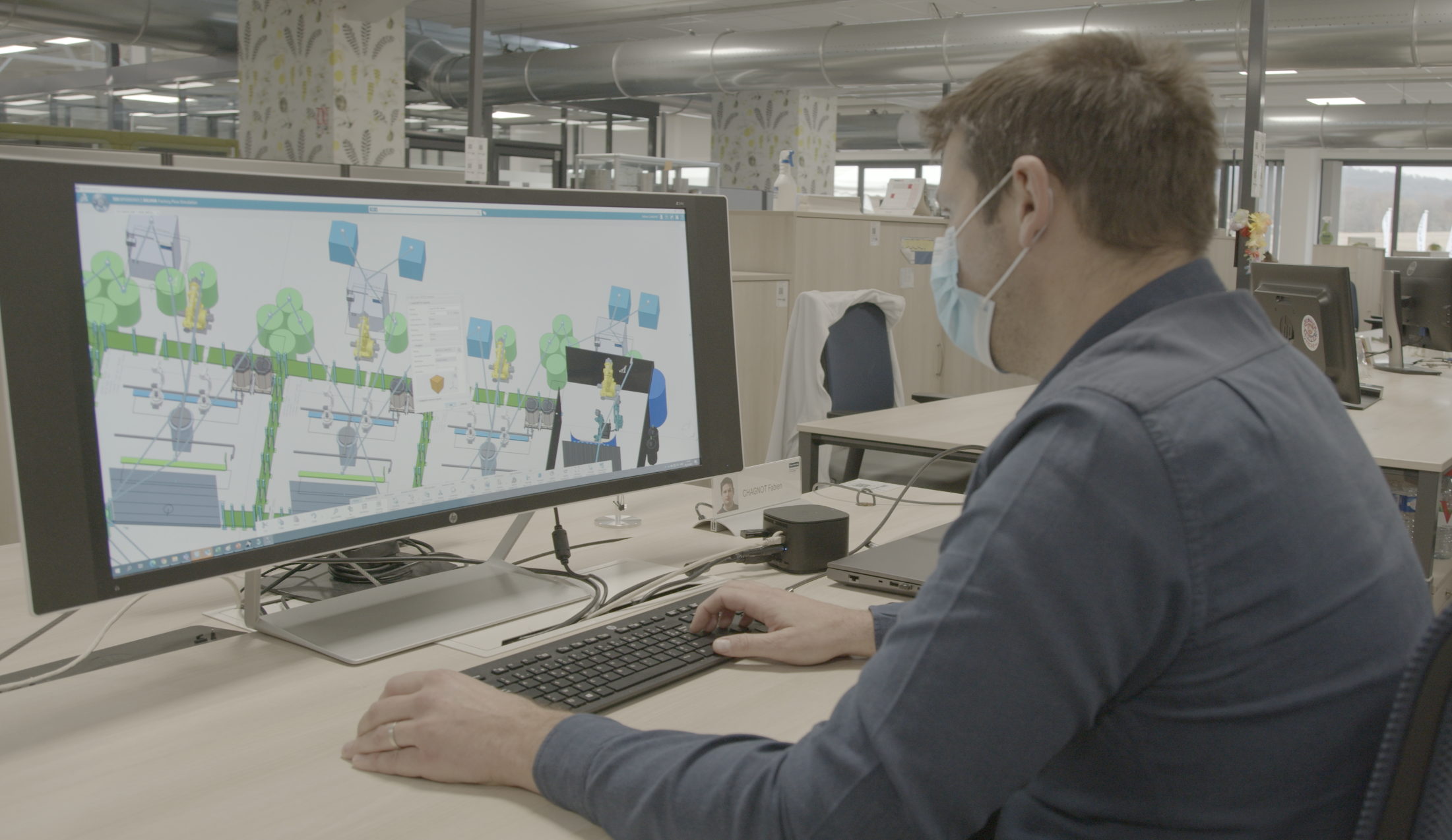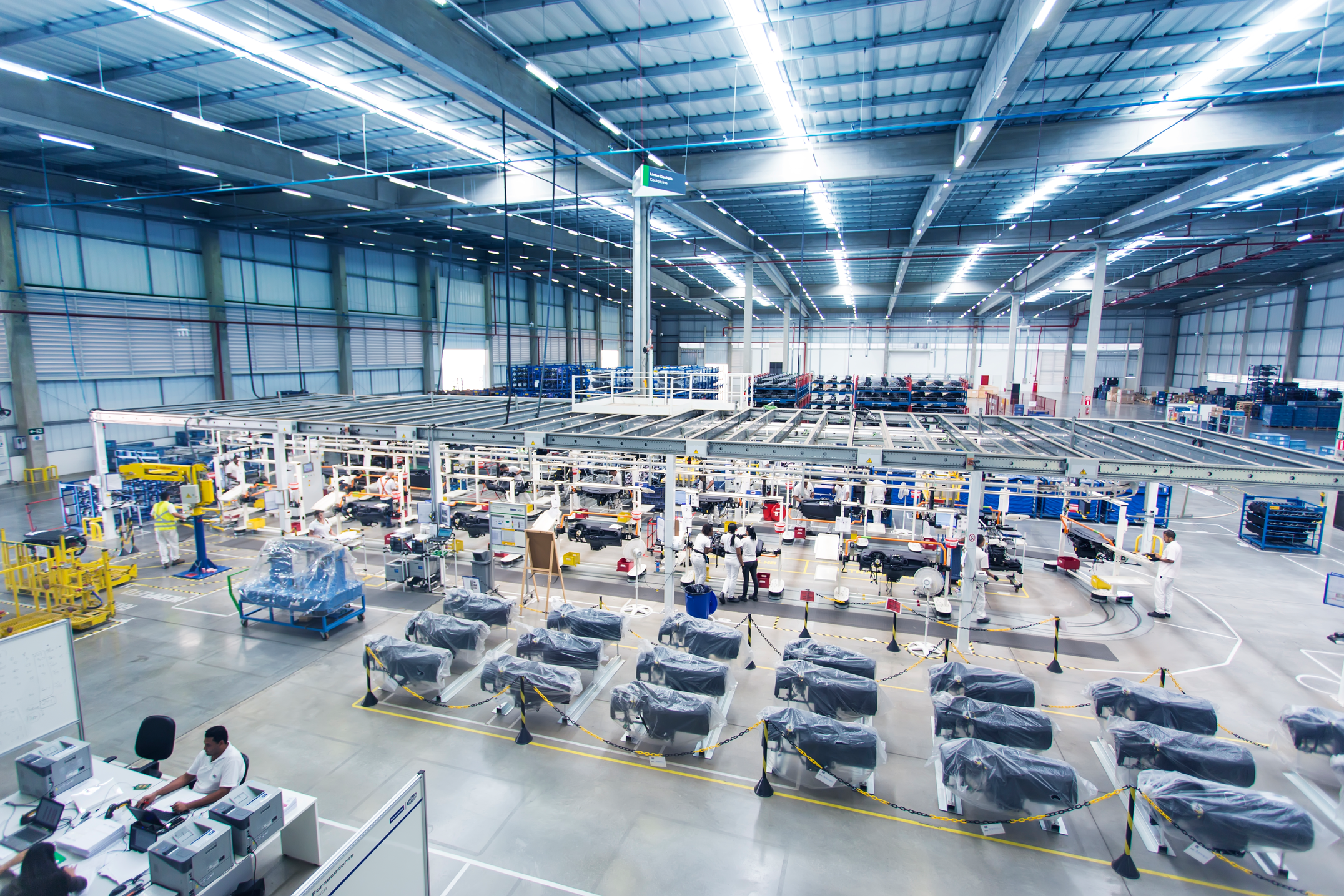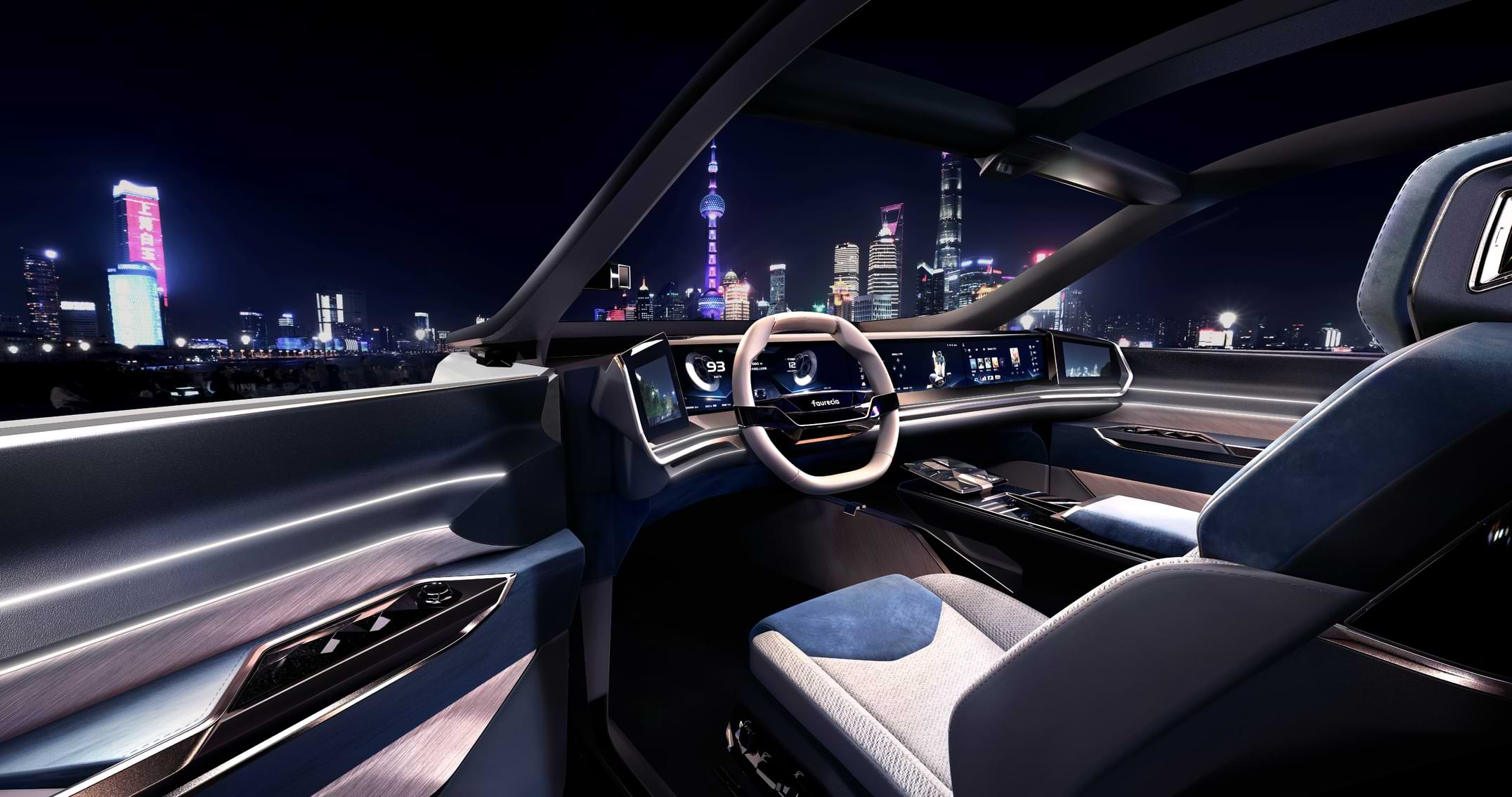FORVIA Faurecia
World-class automotive technology supplier developing sustainable and personalized mobility solutions, FORVIA Faurecia uses 3DEXPERIENCE to manage and unify its global manufacturing operations, and to achieve seamless data flows throughout the product development lifecycle.
Bringing the cockpit of the future to life
In Faurecia’s cockpit of the future, drivers and passengers interact with the vehicle in entirely new ways. Seats made from sustainable materials automatically recline, lift, adjust and swivel; smart pillar to pillar displays adapt to the driver’s vision and ambient light; climate control settings target specific body areas; occupant monitoring responds to stress and fatigue; and full cabin infotainment is accessed with the swipe of a finger. All these innovations come together to create the next generation of personalized, intelligent, sustainable transportation solutions adapted to the needs of each individual passenger.
Producing such innovative products requires state-of-the-art manufacturing facilities and access to cutting-edge technologies. The company’s product lifecycle management (PLM) system is based on Dassault Systèmes solutions including CATIA and ENOVIA. Driven by the need to accelerate innovation and time to market, Faurecia is taking its digital transformation journey a step further.
“We want to be a global leader in mobility,” said Patrick Brionne, group industrial strategy and manufacturing engineering director at Faurecia. “Digitalization is a must. To respond to the latest trends, we need to be able to develop products faster than ever. To do so, we need to fully integrate our processes. Our digital transformation ambition is to be paperless and to gain data continuity from development to manufacturing and vehicles’ end of life.”

Responding with agility
With the pace of innovation showing no signs of slowing down in the industry, Faurecia faces the challenge of getting new factories and production lines set up quickly enough to meet its customers’ launch deadlines. As demand for customized products increases, the company must handle increasingly complex projects simultaneously and needs to quickly scale up manufacturing capacity.
“One issue our factories face is to be ready for customer demand,” Brionne said. “We used to start up a factory on a three to four-year timeframe. Today, from taking an order and starting a new factory, the market carries us to be ready within two years, with sometimes several programs starting at the same time. Our preparation time has halved. We must not only manage volume versatility and deadlines but also last-minute changes. These challenges drive us to develop the product and process concurrently and this is what led us to choose the 3DEXPERIENCE platform.”
The company decided to extend its PLM capabilities by adding DELMIA to its set of applications and upgrading to the 3DEXPERIENCE platform to connect all processes. This enables the company to achieve seamless integration from design and engineering to manufacturing, and create a unified engineering definition – a single structure where both designers and manufacturing engineers can work on in parallel, knowing that it is always up to date and synchronized.
Our digital transformation ambition is to be paperless and to gain data continuity from development to manufacturing and vehicles’ end of life.
Towards a complete digital factory
Working in an agile mode with Dassault Systèmes, Faurecia is enhancing its digital manufacturing capabilities in stages. Step one involved digitalizing process balancing, linking the PLM system to the manufacturing engineering definition and standardizing time and key performance indicator (KPI) reports. Step two was to validate line balancing with shop floor constraints, covering plant layout design and automated guided vehicle (AGV) simulation. The next step will cover line feeding and developing virtual twins of Faurecia’s plants to optimize logistics and plant layouts.
“The Digital Factory project was initiated by the Faurecia Clean Mobility business unit facing issues with the standardization of their processes and assembly lines dedicated to a single product,” said Sébastien Mans, design validation and solution manager at Faurecia. “We encounter complexity from the extended use of robotic equipment and also from increased diversity in our products throughout our factories. The Digital Factory allows us to share knowledge globally thanks to the PLM, to capitalize on all our projects, to avoid errors – to become better over time and train our users. It also enables us to share assembly lines between products by re-using equipment from a product at the end of its life to start up another one or produce a small series.”
In the future, Faurecia plans to use virtual twin experiences to model, simulate and optimize the entire product development process.
“The goal of the digital twin program is to use the computing power to simulate all possible scenarios and make the best choices,” Brionne said. “There are many benefits, including the ability to shorten industrialization times and also to improve performance from day one of production in our new factories or new programs in our existing factories.”

Optimizing AGV fleet logistics
Faurecia takes advantage of hundreds of AGVs and smart robots in its new cutting-edge manufacturing plants. One of the key new capabilities Faurecia has added to support its new plants is AGV logistics simulation and optimization.
“Before, the only way we could plan AGV logistics was to work from our manual calculations, introduce equipment into the plant and test it out in real life before making adjustments,” said François Okon, group Faurecia Excellence System lean industrial design director at Faurecia.
“For example, a few days before a new series launch, we needed to optimize the layout of the shop floor and AGV flows in the factory,” added Mans. “Thanks to virtual simulation, we discovered a big bottleneck in the AGV traffic that would have stopped the parts supply to our client at the end of the day. We were able to improve the process three days before the go live to ensure on time delivery.”
Our goal is to work on production prediction, anticipate possible supply stoppages and ensure that we can deliver to our customers on time.
Clément Henriot is a DELMIA manufacturing expert and uses the application’s capabilities to model and simulate production processes to determine the required number of AGVs in each of Faurecia’s plants and validate AGV routes in the context of physical buildings.
“We simulate the AGVs and logistics flows to determine how many AGVs and tugger trains will be needed in a new plant,” Henriot said. “We also carry out AGV battery simulation, adjusting the AGV speed and battery parameters as well as modifying pathways to optimize routes. Based on these simulations, we can define the exact number of AGVs required to keep the production line flowing.”
The Faurecia and Dassault Systèmes teams worked closely together to define DELMIA’s new logistics simulation capabilities, using a Value Engagement framework and consultative approach to manage the gaps.
“It has been a real partnership to define the flow simulations,” Mans said. “We had close contact with the Dassault Systèmes’ R&D team throughout the project to specify our needs and develop the new functionality. In many ways, this is not an IT project; it’s really driven by the business needs.”
The new flow capabilities are now available as out-of-the-box DELMIA features. This was important to Faurecia, as the company wanted to rollout standardized, predefined functions across the business and ensure everyone works in the same way.
“By using the standard application, we can continue to easily follow the Dassault Systèmes roadmap and benefit from continual enhancements, knowing that everyone is using the same version of the application,” Mans said.
Making best use of resources
Because Faurecia can now visualize, simulate and plan complex flows in the plant virtually, it is able to determine the best possible factory and production line setups that will enable it to operate as efficiently as possible.
“Using DELMIA, we’ve reduced inventory in the plant and are achieving much leaner logistics flows,” Okon said.
“Today, we have major optimizations upstream of the lines, before going into production,” Mans added. “We’re also improving the use of our resources, which ultimately leads to increased productivity and reduced cycle times.”
The company is now far more confident at meeting critical delivery deadlines.
“If you do not define special lanes and simulate traffic flows, everything could end up quickly grinding to a halt,” Brionne said. “It’s like rush hour in a big city. We need to be able to define our priority flows, flag AGV routes that need to be accelerated and ones that absolutely cannot stop. We have no time to try and fail. DELMIA helps us to avoid that.”
Using simulation, Faurecia can also plan for changes in the supply chain and make informed decisions about the repercussions.
“Flow management is complex in a factory,” said Julie Royer, manager for continuous improvement, production control and logistics at Faurecia Clean Mobility. “You cannot make a change without potentially affecting the entire production chain. For example, if a supplier modifies packaging, it could affect several touchpoints of the supply chain. This means we will receive and store it differently. We also will feed it differently to the production line. Virtual simulation will make it possible to take into account all the consequences linked to a change.”

Virtual plant vision
As Faurecia continues with its digital transformation, it is increasingly using virtual twins to perfectly simulate how its plants should be organized.
“With a complete virtual twin of the plant, we will be able to simulate the entire building, taking into account all physical constraints such as windows, doors and pillars, to see exactly how production lines will fit into the plant and operate,” Okon said. “When we have to integrate a new program into an existing plant, we will be able to simulate the flow and layout to ensure it runs as expected. DELMIA will become our standard.”
“Our goal is to work on production prediction, anticipate possible supply stoppages and ensure that we can deliver to our customers on time,” Mans added.
Soon, Faurecia will manage all its manufacturing facilities and operations in the virtual world to deliver high-performance industrial capacity and set an industry benchmark for reducing carbon emissions.
“The next step for Faurecia is to widely use virtual twins for all new factories and programs,” Brionne said. “If we can optimize our production processes and manufacture our products right first time, we will also use less energy and consume fewer materials. For example, in one of our plant virtual twins, we carried out simulations to achieve the optimal level of brightness in the plant while saving energy. The factory of the future will be made up of connected and optimized machines, all managed within the virtual twin.”
Discover more about the On-Target Vehicle Launch industry solution experience.

Focus on FORVIA Faurecia
Faurecia’s recent acquisition of a controlling stake in the German company HELLA gave birth to a combined group known as FORVIA, creating the seventh largest automotive supplier in the world. With over 300 industrial sites and 77 R&D centers, 150,000 people, including more than 35,000 engineers across 40+ countries, FORVIA provides a unique and comprehensive approach to the automotive challenges of today and tomorrow. Composed of six business groups with 24 product lines and a strong IP portfolio of over 14,000 patents, FORVIA is focused on becoming the preferred innovation and integration partner for OEMs worldwide.
For more information: www.faurecia.com


